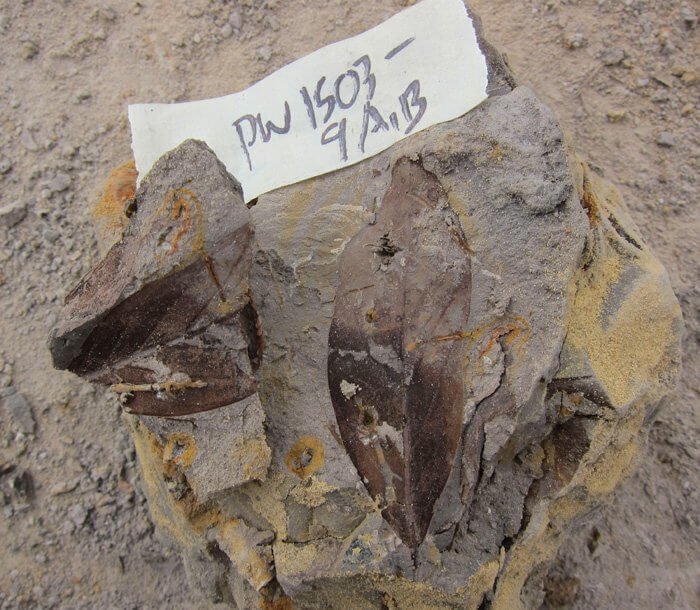
Fossils of Leaves In Borneo Reveal An Ancient 4 Million Year Old Forest
And one that's rapidly disappearing.
By David Nield | Science Alert
Leaf fossils on Borneo have been studied in detail for the first time, say researchers, revealing that the rainforests that cover the surface of the island have been in place and fostering biodiversity for at least 4 million years.
The current landscape, dominated by dipterocarp trees, looks much as it would have done during the Pliocene Epoch some 2.6-5.3 million years ago, researchers say – and that makes it a valuable ecosystem to preserve for future generations.
Borneo is home to almost 270 dipterocarp species, which is more than half the total global species. With tropical Asian biodiversity currently under severe threat, the island plays a crucial role in supporting that biodiversity.

“This is the first demonstration that the characteristic dominant life form of Borneo and the entire Asian wet tropics, the dipterocarp trees, was not only present but actually dominant,” says paleobotanist Peter Wilf, from Pennsylvania State University. “We found many more fossils of dipterocarps than any other plant group.”
These dipterocarps are among the tallest tropical trees in the world, with some individuals able to grow up to heights of around 100 meters (328 feet).
However, rock fossils of their leaves are difficult to come across, because of the cover provided by the forests and their soils, according to Wilf.
Previously, fossilized pollen has been used to study plant life on Borneo, but because dipterocarp pollen decays so quickly, there has been a suspicion that these pollen studies haven’t shown the whole picture. Here, the team found rocks with many dipterocarp leaf fossils but little in the way of dipterocarp pollen, backing up the bias hypothesis.

This new study combines both leaf and fossil pollen, identifying an ancient world of mangroves and swamps bordered by tropical lowland rainforests, featuring diverse fern undergrowth and an abundance of climbing plants.
“We’re getting to actually seeing what the environment was like millions of years ago,” says Wilf. “It was very much like what you can find there now, although those habitats have been cut down across much of tropical Asia.”
The forests are coming under pressure from logging activities, agricultural conversion of the land, and climate change. There are high deforestation rates in Borneo, though in the Brunei area of the island – where the study was carried out – the majority of the old-growth rainforests are still preserved.
Maintaining and expanding that preservation should be a top priority, the researchers say. Through pollination and a vast store of nutritious seeds, dipterocarp trees act as the foundation of life for numerous kinds of flora and fauna – including proboscis monkeys, clouded leopards, sun bears, and rhinoceros hornbills.

Now, around 89% of the 460 Asian dipterocarp species have Near Threatened status, while 57% are labelled as Endangered, Critically Endangered, or Extinct. If we allow the slide to continue, this latest study shows, then we’re losing four million years of forest history. A greater understanding of the region’s history should help conservation efforts.
“There are very few fossil studies from the Asian tropics,” says ecologist Ferry Slik, from the Universiti Brunei Darussalam.
“I hope this study will stimulate more research efforts on fossils in the tropics as they will tell us a lot about the natural history of the region.”
The research has been published in PeerJ
This article was originally published by Science Alert.
